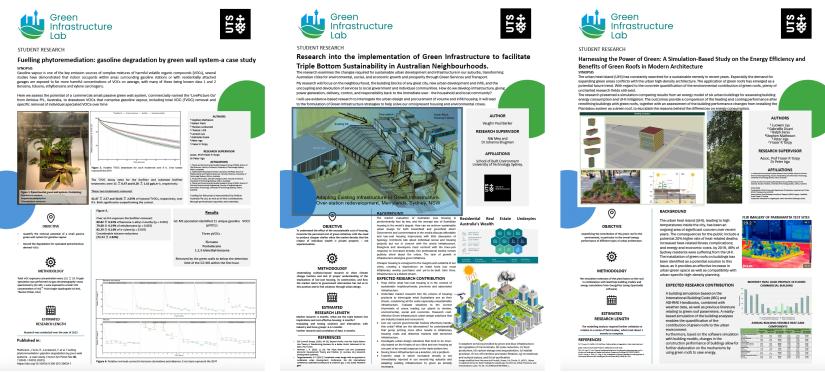Green Infrastructure is a nature-based solution to our urban future
In an era of rapid urbanisation, our cities grapple with challenges like climate change, a decline in biodiversity, increasing in-equality, and resource scarcity.
Green Infrastructure (GI) addresses these issues head on by harnessing the power of nature.
GI encompasses networks of natural, semi-natural, and artificial green and blue spaces and systems. Think green roofs, green walls, urban parks, rooftop farms, wildlife corridors and street trees, all part of an interconnected network that tackle some of the most pressing challenges of our time.
Understood systemically, a green infrastructure approach to urbanism delivers ecosystem services that promote healthy, low-carbon, sustainable spaces. It calls on an integrated and trans-disciplinary approach to sustain human life in cities.
Simply put, GI is a nature-based solution to our urban future!
Discover the UTS GI Lab
At the heart of UTS lies the Green Infrastructure Lab (GI Lab), dedicated to reimagining urban landscapes.
This innovative hub adopts trans-disciplinary approaches to push the boundaries of our current understanding of nature and cities, as well as the potential of GI to offer regenerative and resilient solutions to the pressing issues of our time.
Our pillars
- Innovative research: Creating the green cities of the future.
- High-tech innovations: Levering cutting-edge technology for sustainable solutions.
- Deep collaboration: Uniting minds across disciplines and industries.
- Knowledge exchange: Sharing insights and sparking global engagements.
UTS GI Lab's areas of Expertise
The lab draws on UTS's established expertise in the disciplines of Urban Planning, Urban Design, Architecture, Construction Management, Property Development, Design Thinking, Landscape Architecture, Visual Communication, Science and Engineering.
The GI lab invites seeks collaborations with industry and professional partners keen to work with our researchers and academics on GI related topics, including but not limited to:
- Data Integration: Merging diverse data sources for informed GI decisions.
- Predictive Modelling: AI-driven simulations for anticipating GI impacts.
- Landscape Analysis: Advanced imaging using drones and digital scanning.
- Place-based solutions: Ensuring GI responses are context specific and culturally responsive
- Optimised Design: AI-aided design for efficient green spaces.
- Climate Resilience: Leveraging GI for climate change resilience.
- Transportation and Housing Integration: Delivery while reducing environmental impacts.
- Real-time Monitoring: IoT-enabled GI components for instant feedback.
- Community Engagement: Inclusive AI tools for community involvement in GI planning.
- Advocacy and Communication: championing the value of GI with the help of new media
- Evaluation and Analysis: Quantifying the performance and long-term benefits of GI.
- Policy Insights: Translating research into sustainable urban development policies.
Our projects
Some of our most recent projects include:
Green Shared Spaces
Optimising school space as a community asset.
Rewilding
Progressive conservation
Urban Agriculture
Growing food and density together
Green Buildings
HDR student research
HDR (Higher Degree by Research) students showcased their research through a series of posters at the launch of the UTS Green Infrastructure Lab.
Find out about the research projects our HDR students are working on, and see examples of their work.
Experience the GI power
From new sustainable materials to advanced city designs, we're leading the charge in exploring just how impactful GI can be.
Be part of this green revolution. Explore, innovate, and grow with us. The future is green, and it starts here, at UTS.
Contact
Professor Jua Cilliers
Head of the School of Built Environment











